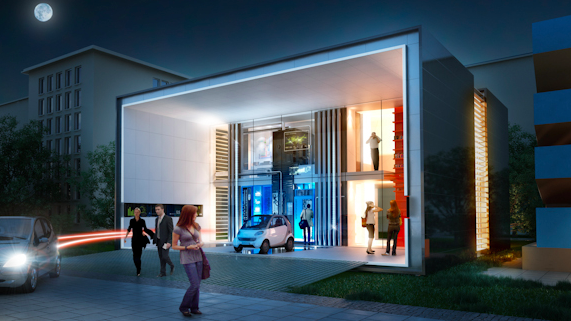
Germans Trialing House that Produces Enough Spare Energy to Power a Car
f this doesn’t sound like a dream come true, I don’t know what does. The German government is testing a new design for a low-energy home packed with renewable energy generation systems, dubbed the Efficiency House Plus. If the design works as it should, it’ll not only produce enough electricity to meet all its own needs, but it’ll produce enough spare juice to charge a family car.
The 1400-square-foot house generates all this power using a combination of solar panels and heat storage systems. At the same time, advanced energy management technology helps keep consumption down and ensures the house’s energy use is in line with what the energy of the weather provides. As SmartPlanet reports:
“[The building utilizes] something called a predictive energy management system, meaning it anticipates the amount of energy the house will consume,” Thomas Feldman of Offenburg College explained.
“It relies upon models that consider weather conditions and other existing data to predict how much energy the house will produce and how much it will consume. It then makes decisions [about which energy system to engage].”
The current prototype is situated in West Berlin and, as you can see, it’s a handsome piece of architecture. It’s also completely recyclable. Seriously, what’s not to like?

Designed by a team at Stuttgart University, the house is designed to store excess energy in batteries, but can also use it to power electric cars parked outside. Over the 15-month trial beginning in March, a family of four will live in the house and run an electric car on the spare energy. Opel, Daimler, Volkswagen, Audi and BMW will take turns providing an electric car for three months to support the trial. (Shotgun going to visit during the BMW period.)The trial was launched in December by none other than Angela Merkel, Germany’s Chancellor, herself. “This house shows what is already possible today,” she told the crowd. “Energy-efficient buildings and electric mobility are major keystones for speeding up the implementation of our energy strategy. There is still a lot of potential in both sectors. I am delighted that we are testing ground-breaking innovations in everyday conditions here.”
Before the test family moves in, in March, there’ll be a public viewing period, so if you’re in Berlin in January or February, pop in and let us know what you think.
(Source)
